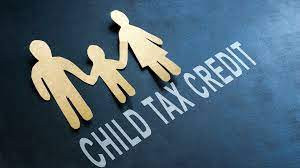

30
Jan
Navigating the Child Tax Credit as Divorced Parents: A Guide to Maximizing Benefits
Divorce brings significant changes to family dynamics, including financial considerations such as the Child Tax Credit (CTC). Understanding how this credit works and how it applies to divorced parents is crucial for maximizing its benefits. In this blog post, we'll explore what divorced parents need to know about the Child Tax Credit and provide practical tips for optimizing its potential.
Understanding the Child Tax Credit: The Child Tax Credit is a valuable tax benefit designed to assist families with the cost of raising children. It provides a tax credit of up to $3,600 per qualifying child under the age of 6 and up to $3,000 per qualifying child aged 6 to 17. However, the rules for claiming the credit can be complex, especially for divorced or separated parents.
Key Considerations for Divorces Parents:
- Custodial vs. Non-Custodial Parent: The parent with whom the child spends the majority of the year is typically considered the custodial parent for tax purposes. Only the custodial parent can claim the Child Tax Credit unless they agree to waive the credit in favor of the non-custodial parent.
- Form 8332 - Release/Revocation of Release of Claim to Exemption for Child by Custodial Parent: This IRS form is used by custodial parents to release their claim to the Child Tax Credit to the non-custodial parent. It's important for divorced parents to communicate and decide who will claim the credit each year, as the IRS won't enforce this decision unless it's documented on Form 8332.
- Alternate-Year Agreement: Some divorced parents opt for an alternate-year agreement, where they agree to alternate claiming the Child Tax Credit each year. This arrangement can provide a fair solution for both parents and ensure that each parent benefits from the credit over time.
- Dependency Exemptions: In addition to the Child Tax Credit, divorced parents should also consider the dependency exemptions for their children. The custodial parent is generally entitled to claim the dependency exemption unless they release it to the non-custodial parent using Form 8332.
Practical Tips for Maximizing Benefits:
- Open Communication: Establish open and honest communication with your co-parent to discuss the Child Tax Credit and other tax-related matters. Clearly outline your intentions and reach an agreement that is fair and beneficial for both parties.
- Keep Records: Maintain accurate records of custody arrangements, support payments, and any agreements regarding the Child Tax Credit. Documentation is essential for resolving disputes and ensuring compliance with IRS requirements.
- Seek Professional Advice: If you're unsure about how to navigate the Child Tax Credit as a divorced parent, consider seeking advice from a tax professional or financial advisor. They can provide personalized guidance based on your unique circumstances and help you make informed decisions.
Navigating the Child Tax Credit as divorced parents requires careful planning, communication, and understanding of IRS rules and regulations. By working together, keeping detailed records, and seeking professional advice when needed, divorced parents can maximize the benefits of the Child Tax Credit and ensure a fair and equitable arrangement for their children's financial support.
To schedule a consultation with an experienced family law attorney at Tom Bush Law Group, please call us at 704-347-0110.




